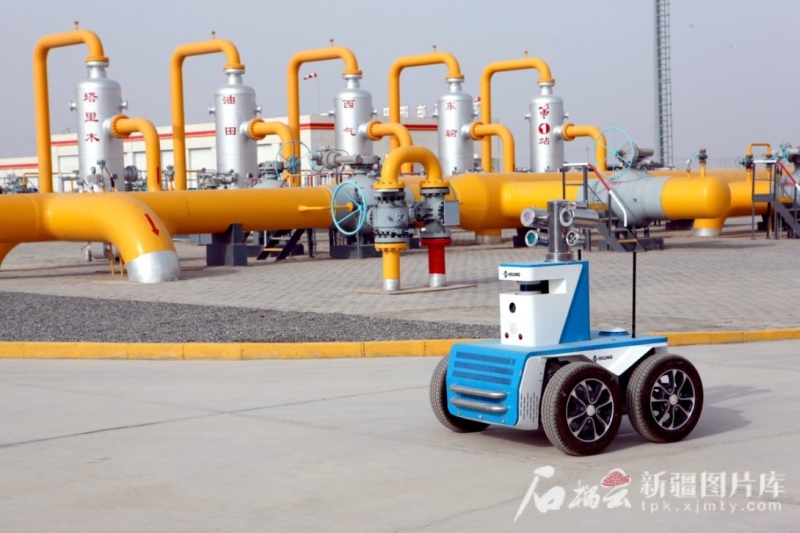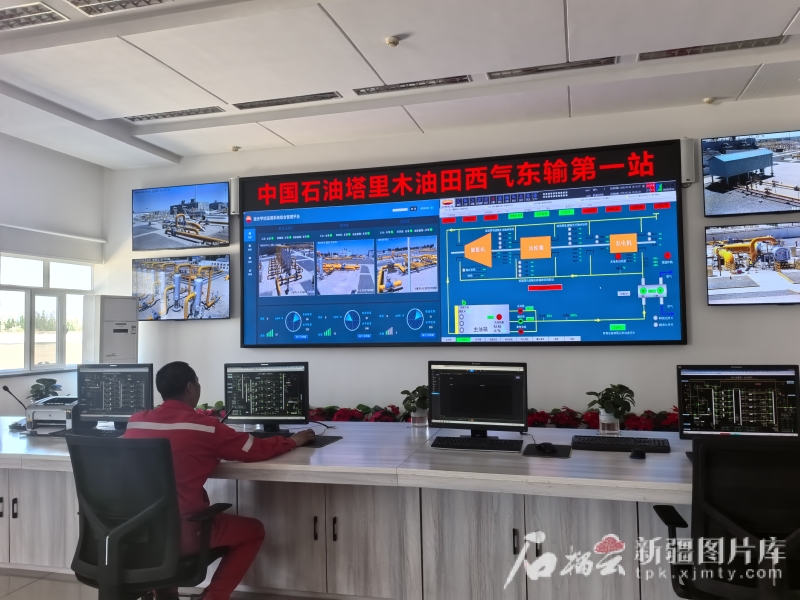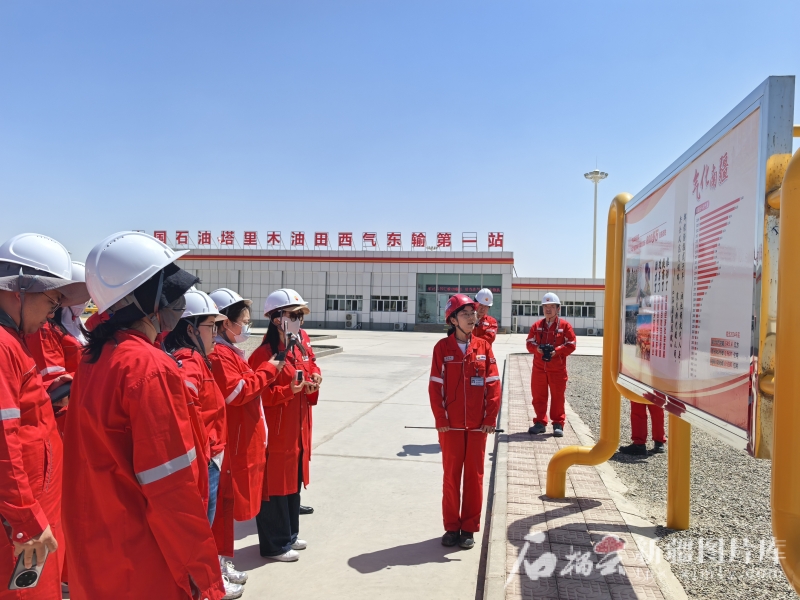The thick yellow pipelines coiled around the first station of the West-East Gas Pipeline like a dragon. The natural gas in the pipeline rushes continuously. After dust removal and pressure-upping, it goes eastward and can be transported to Shanghai as far as the farthest.

On May 14, an intelligent inspection robot inspected the first stop of the West-East Gas Pipeline. Photo provided by Tarim Oilfield
On May 16, when the interview team of the theme "Great Power Project View Xinjiang" came to the first stop of the West-East Gas Pipeline in Luntai County, many reporters were surprised: the daily gas consumption of many urban residents in the eastern part actually came from such a remote Gobi Desert in Xinjiang. "At present, the station transports about 60 million cubic meters of natural gas per day. According to the average daily gas consumption of 0.5 cubic meters for family of three, the natural gas delivered daily can meet the use of 120 million households." said Liang Shijia, the first station of the West-East Gas Pipeline of the Oil and Gas Transportation and Sales Department of China National Petroleum Tarim Oilfield Branch.
The first station of the West-East Gas Pipeline is the source and starting point of the first line of the West-East Gas Pipeline Project. In 2002, the construction of the West-East Gas Pipeline Project, a landmark project in the western development, started construction. This energy artery, which starts from Lunnan Town, Luntai County, Xinjiang and ends at Baihe Town, Qingpu District, Shanghai, is about 4,200 kilometers long and runs across the east and west of my country.
The first station of the West-East Gas Pipeline, which undertakes the metering and transport of more than 85% of the natural gas in Tarim Oilfield, is known as the "heart" of the Tarim Oilfield. Since it was put into operation in September 2004, it has been operating safely and stably for more than 20 years. Over the past 20 years, employees of the first station of the West-East Gas Pipeline have been rooted in the Gobi Desert, working hard and silently doing their best to protect the safety of the station and ensure stable gas supply without a day of interruption.

The first station of the West-East Gas Pipeline Pipe is operated through a large-screen monitoring station. Pomegranate Cloud/Photo by Xinjiang Daily reporter Yu Jiangyan
In order to improve the safety operation standards of the station, the first station of the West-East Gas Pipeline has continued to promote intelligent construction in recent years. Now, a methane laser remote sensing detector is installed at high altitudes. It is like a "sentinel", standing on duty 24 hours a day to prevent natural gas leakage from the station; there is also an intelligent inspection robot, which is not afraid of the scorching heat or the severe cold, assisting inspection workers to protect the station's production safety day and night.
To implement the "dual carbon" goal, the first station of the West-East Gas Pipeline also emits "zero carbon" electricity through the voltage differential kinetic energy recovery system. When natural gas is transmitted from the station, the natural gas will be compressed and pressurized to enhance natural gas liquidity. The station uses this pressure difference to promote the gears of the generator set to rotate and generate electricity. In addition to meeting the use of the station, there is also a large amount of surplus in a year. The surplus power is outputted from the grid. In October 2023, the first station of the West-East Gas Pipeline was recognized as a zero-carbon oil and gas station.
Chang Guichuan, executive director and party secretary of the Oil and Gas Transportation and Sales Department of China Petroleum Tarim Oilfield Branch, introduced that as of the end of March 2025, the first station of the West-East Gas Pipeline had transported more than 370 billion cubic meters of natural gas to the downstream, equivalent to 492 million tons of replacement standard coal and 529 million tons of carbon dioxide emissions.
As of now, four pipelines have been built in the West-East Gas Pipeline Project. The second line of the West-East Gas Pipeline Project starts from Horgos, Xinjiang in the west, and reaches Shanghai in the east, and reaches Guangdong and Hong Kong in the south; the third line also starts from Horgos in the west, and reaches Fujian and Guangdong in the south; the fourth line (Turpan-Zhongwei) Xinjiang section has been put into operation in September 2024.
Now, the pipeline system constructed by the first, second, third and fourth lines of the West-East Gas Pipeline Project is interconnected and connected with the China-Russia East Line, the Sichuan-East Gas Pipeline, the Jiangsu-Anhui Pipeline, and the Qingning Pipeline, and is integrated into the national natural gas "one network".
At present, the total mileage of the four pipelines exceeds 20,000 kilometers. Among them, the second line of the West-East Gas Pipeline Project is connected to the China-Central Asia natural gas pipeline originating from Turkmenistan in Horgos, jointly building the world's longest energy artery to date.
Through interconnected pipelines, the gas supply range of the West-East Gas Pipeline System, which can be called a super project, can cover 28 provinces, autonomous regions and municipalities across the country, benefiting more than 400 cities, more than 3,000 large and medium-sized enterprises and nearly 500 million people.

On May 16, the theme interview team of "A Big Country Projects Looking at Xinjiang" interviewed at the first stop of the West-East Gas Pipeline. Pomegranate Cloud/Photo by Xinjiang Daily reporter Yu Jiangyan
As the main source of the West-East Gas Pipeline, Tarim Oilfield, has started gasification and construction in southern Xinjiang since the 1990s, and completed and put into operation of the Southern Xinjiang natural gas benefit project in 2013. Up to now, the operating mileage of the Southern Xinjiang Natural Gas Limin Pipeline Project has exceeded 4,700 kilometers, and the cumulative natural gas transmission exceeds 65 billion cubic meters, achieving full coverage of the gas supply range of the five prefectures in southern Xinjiang, making important contributions to the economic and social development of southern Xinjiang and green and low-carbon transformation.